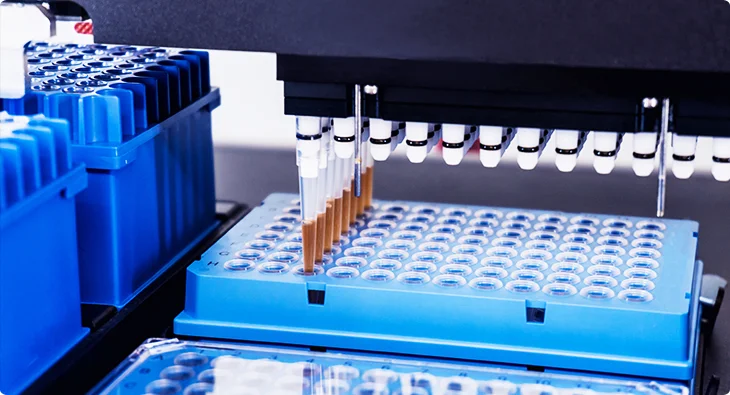Lab Automation: Scaling xMAP® Assays for High-Throughput Applications
Experts from Thermo Fisher Scientific give a glimpse into automated workflows when analyzing gene and protein expression
For many researchers who need the high-throughput enabled by bead-based Thermo Fisher Scientific product managers Stefan Jellbauer and Bani Suri spoke about using xMAP assays in their automated workflows for a truly high-throughput gene and protein analysis pipeline while running 96-well or 384-well plates.
[thumbnail]
Going well beyond increased throughput
“We like to think of automation as a journey,” Suri said. For some scientists, it means adding a single robot to load samples. For others, it can mean automating an entire workflow or laboratory. No matter which option users take, automation offers a broad range of benefits. “Automation goes well beyond increasing throughput,” she added. Other advantages include minimizing hands-on time, reducing errors, improving reproducibility, and enabling data integration.
Thermo Fisher, a Luminex partner, has designed and commercialized multiple assays using xMAP Technology. In this presentation, Jellbauer and Suri focused on two assays specifically: the Invitrogen™ ProcartaPlex™ and QuantiGene™ Plex, which are multiplex assays designed for the analysis of up to 80 proteins or genes, respectively. Both can be paired in a streamlined workflow to generate both protein and gene expression data for a sample or set of samples using the same xMAP reader. In one example, Jellbauer explained how this approach was used to measure IL-8 and MCP-1 signals with the MAP INTELLIFLEX® System.
Automation reduces the time to results and it increases overall efficiency
According to Jellbauer, this kind of capacity is a good fit for applications such as high-throughput screening, where analyzing thousands of compounds might require processing hundreds of thousands of wells. In another example, he showed how one user applied this approach when analyzing nearly 5,000 samples in 3D cell culture. Having a multiplex screen “was really helpful to reach their goals,” he said. In general, automation reduces the time to results and it increases overall efficiency. Paired with xMAP-based assays, an automated approach allows researchers to generate a wealth of useful data.
For both the protein and gene expression analysis assays, Thermo Fisher offers a free, customizable data analysis tool to help researchers review and understand their results.
Learn more about xMAP-based assays offered by Thermo Fisher, or check out Luminex’s Kit Finder tool to see a list of all commercially available xMAP assays.:
Thermo Fisher xMAP-based Assays ®</sup> Technology-Based Multiplex Assays” href=”/?wpdmdl=48944″>Learn How Automation can be Implemented in Your Lab

